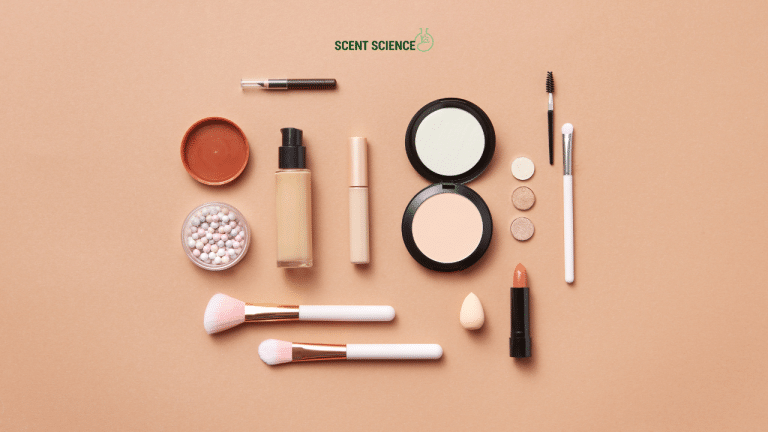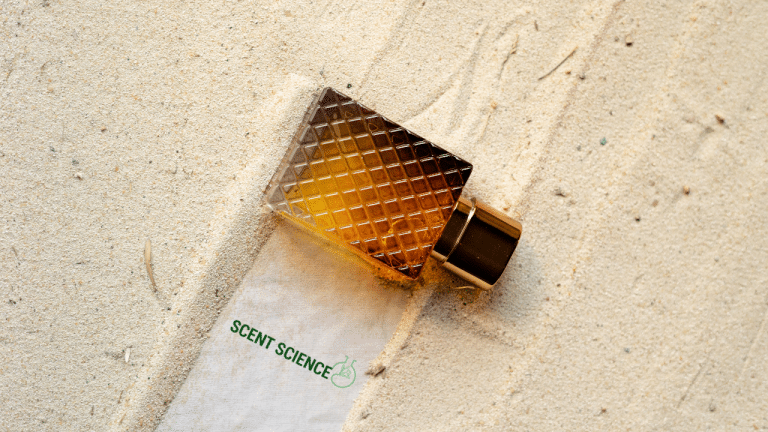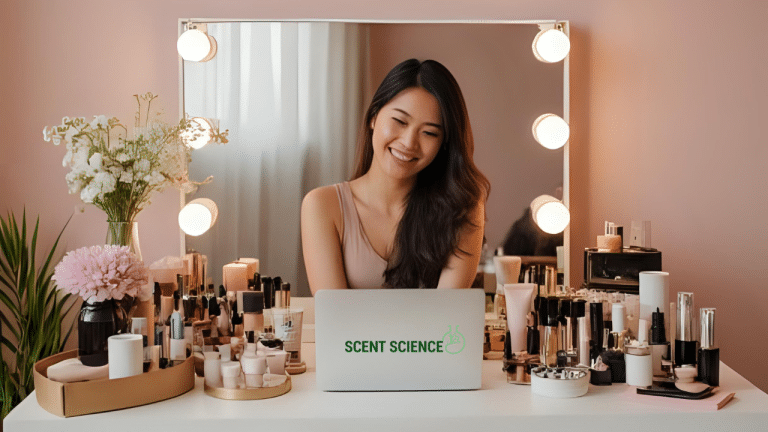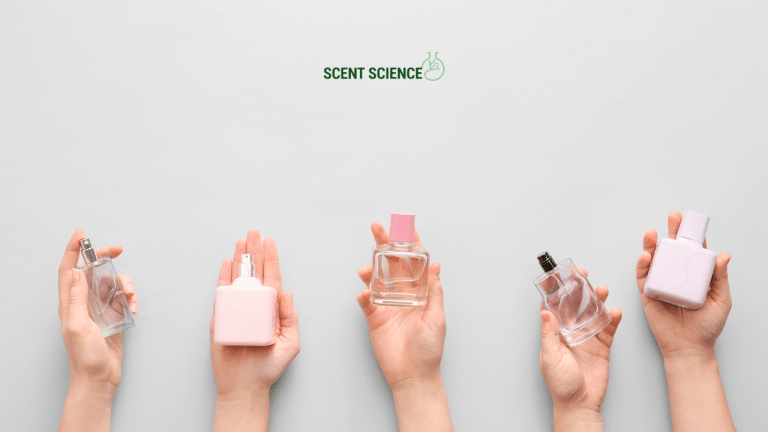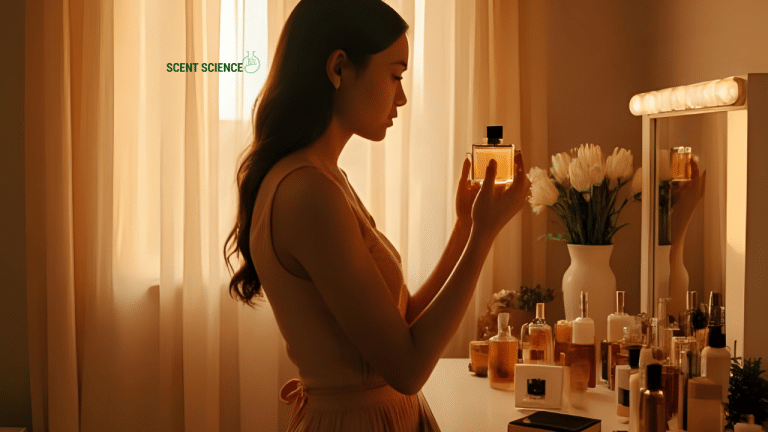What if artificial intelligence could be the ultimate creative assistant for the world’s most innovative perfumers?
For centuries, perfumery has been a deeply artistic craft—blending natural ingredients, olfactory memories, and human intuition. From ancient distillation methods to modern labs, scent creation has evolved gradually. But today, that evolution is accelerating at a revolutionary pace with AI fragrance technology revolutionizing the industry.
Enter AI perfume technology: not as a replacement for human creativity, but as a powerful collaborator. Artificial intelligence is reshaping the fragrance world by enhancing trend forecasting, ingredient sustainability, and the speed of research and development. It’s a new era of scent-making, where AI and human perfumers collaborate to blend innovation with artistry.
Table of Contents
ToggleThe Changing Landscape of Perfume Creation
Traditional Perfumery Challenges
Despite its allure and legacy, traditional perfumery faces several bottlenecks:
- Time-consuming R&D cycles that delay product launches
- High costs tied to ingredient exploration and experimentation
- Inability to quickly adapt to fast-changing global scent trends
- Environmental concerns, especially with overharvesting rare ingredients, but AI powered sustainable fragrances are addressing these issues.
AI’s Transformative Potential
AI perfume platforms help solve these issues through:
- Machine learning for predicting fragrance trends with high accuracy
- Compound analysis that identifies optimal ingredient blends
- Sustainable ingredient mapping for ethical, eco-friendly formulations
- Rapid prototyping that cuts down iteration time
- A seamless bridge between human creativity and computational logic, facilitating collaborations between perfumers and algorithms.
How AI Supports Perfumer Creativity

Trend Forecasting and Consumer Insights
AI enables perfumers to tap into real-time cultural shifts and global scent desires:
- Social media analytics scan sentiment, language, and preferences
- Predictive models anticipate rising fragrance categories (e.g., calming lavender in high-stress times)
- Emotional mapping ties mood trends to scent types, paving the way for mood-based fragrances as the future of scents.
- Case Study: Several recent best-selling scents were developed with AI input analyzing post-pandemic consumer desire for “comfort scents” and nostalgia-driven notes
Ingredient Innovation and Sustainability
AI plays a vital role in responsible scent development:
- Identifies sustainable alternatives to endangered or expensive materials
- Uses molecular modeling to predict how new compounds will smell, including bioengineered fragrance ingredients.
- Combines natural and synthetic components efficiently without compromising ethics
- Assesses formulas for environmental impact, helping brands make greener choices
Accelerating Research and Development
Incorporating AI into fragrance R&D transforms the speed and precision of creation:
- Uses computational chemistry to simulate chemical reactions and scent profiles
- Reduces trial-and-error cycles, saving time and money
- Allows for real-time testing in virtual labs, minimizing waste
- Democratizes innovation by making advanced R&D accessible to niche brands, not just giants, as highlighted in the AI in fragrance development process.
Collaborative Case Studies
Leading Fragrance Houses Embracing AI
Several industry leaders are at the forefront of AI perfume collaboration:
- Givaudan developed a digital fragrance creation tool (Carto) that uses AI to suggest ingredient pairings based on desired emotions.
- IFF (International Flavors & Fragrances) uses AI to analyze millions of scent combinations and market trends for agile product development.
These collaborations have already resulted in market-ready perfumes praised for their innovation, efficiency, and emotional resonance.
The Human-AI Perfumery Partnership

Preserving Artistic Integrity
Even the most advanced AI perfume systems can’t replace:
- The intuitive sense of balance a perfumer brings
- The emotional narrative behind a scent
- The storytelling and culture embedded in perfume traditions
AI is best viewed as a creative extension, helping perfumers visualize more options and explore new olfactory territories. The AI fragrance design guide to custom scents offers insights on how perfumers can harness these technologies.
Technical and Creative Challenges
Despite its potential, AI perfume technology comes with limitations:
- Lack of emotional depth in decision-making
- Ethical concerns around data usage and formula ownership
- Risk of homogenization if overused without artistic direction
- Training gaps, as many perfumers are not yet fluent in data-driven tools
Balancing artistic vision with algorithmic assistance requires interdisciplinary collaboration and ongoing skill development. This is particularly true in the context of viral scent hack fragrance science, which explores how new scents can quickly capture consumer interest.
Future Technological Horizons
Emerging AI Capabilities in Fragrance
The next frontier in AI perfume creation includes:
- Sensory prediction models that simulate how scents evolve throughout the day
- Hyper-personalization, matching fragrances to user DNA or hormone levels, as explored in AI perfume personalization projects.
- Environmental sensors that adjust scent based on climate and mood
- Emotion-reactive perfumes that shift profiles based on biometric input
Ethical and Creative Considerations
As AI becomes more embedded in perfumery:
- Intellectual property of AI-assisted formulas must be clearly defined
- Maintaining cultural richness and diversity in global scent creation is crucial
- Transparency in data sources and formulation logic helps build trust
- The challenge lies in amplifying creativity, not replacing it
How Perfumers Can Embrace AI Collaboration
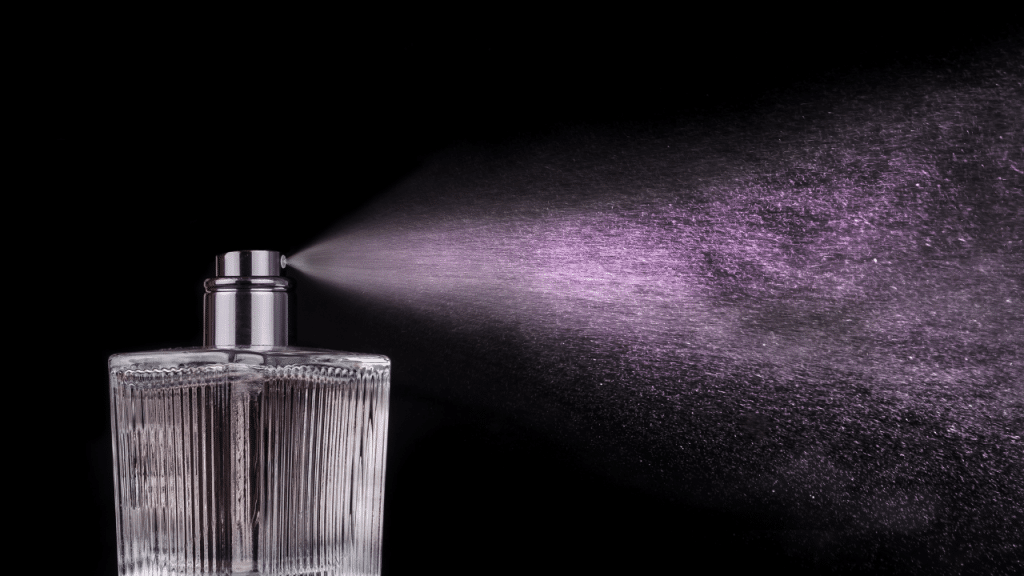
Practical Implementation Strategies
- Explore AI tools like Carto, Scentmate, or Symrise’s Philyra
- Invest in training programs that merge fragrance artistry with data literacy
- Foster cross-functional teams with perfumers, data scientists, and chemists
- Encourage creative experimentation with AI as a muse, not a master, as seen in successful AI perfume personalization projects.
Conclusion
AI perfume technology is revolutionizing the fragrance industry—not by removing the human element, but by enhancing it. From faster R&D to sustainable formulations and emotional insights, AI is becoming an essential collaborator in modern perfumery.
As we step into this next chapter, it’s not about man vs. machine. It’s about man with machine—creating scent experiences that are smarter, greener, and more personal than ever before.
FAQs
Q: Will AI replace human perfumers?
No. AI supports formulation, but creativity, storytelling, and sensory finesse remain uniquely human.
Q: How accurate are AI fragrance predictions?
Quite accurate in identifying trends and preferences, but human oversight ensures emotional relevance and complexity.
Q: What are the costs of implementing AI in fragrance development?
Initial costs can be high, but long-term savings from reduced R&D time and improved product success are significant.
Q: Can AI help create more sustainable fragrances?
Yes. AI identifies eco-friendly ingredients and reduces experimental waste.
Q: How do traditional perfumers learn to work with AI tools?
Through workshops, interdisciplinary collaboration, and training programs focused on digital tools and scent science.
💡 Explore More
Dive deeper into the science and innovation shaping the future of beauty and fragrance.
👉 Visit ScentScienceBeauty.com to explore AI perfume breakthroughs, expert insights, and product reviews.
📲 Stay Connected
Follow us on social media for the latest updates, behind-the-scenes content, and interactive fragrance science tips.

![[Inside AI Perfume Creation] How Perfumers and Algorithms Are Designing the Scents of Tomorrow](https://scentsciencebeauty.com/wp-content/uploads/2025/05/10x-Blogs-2025-05-12T190023.049-1024x576.png)
